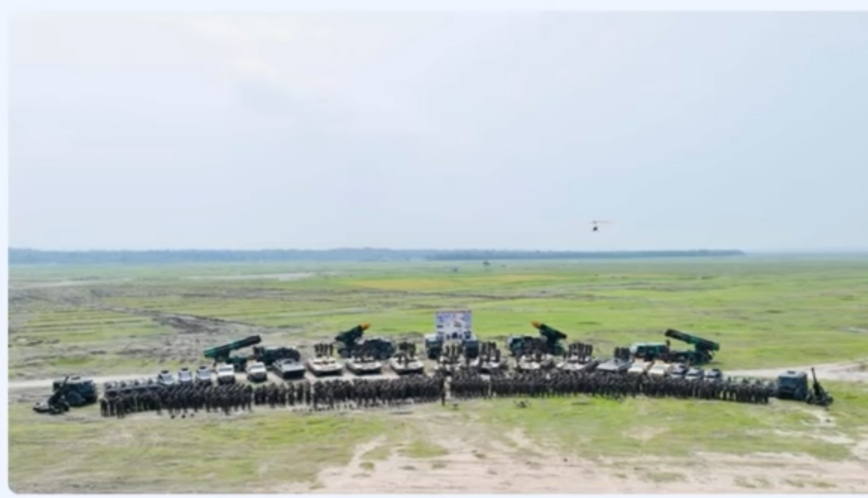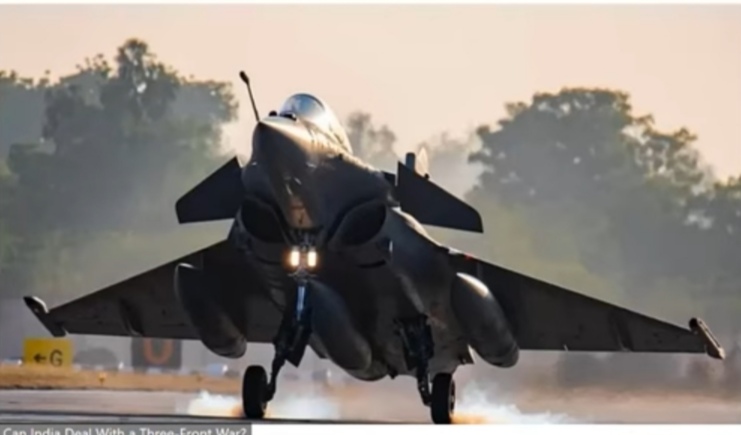In a powerful demonstration of military preparedness, the Indian Army recently carried out a large-scale exercise titled ‘Trishakti Prahar’ in the strategically vital Siliguri Corridor of West Bengal. The drill brought together various wings of the armed forces—including infantry, artillery, armored units, and the Indian Air Force—to simulate a high-intensity, multi-front combat scenario.
The Siliguri Corridor, often referred to as the “Chicken’s Neck”, is a narrow land strip that connects mainland India to its northeastern states. Just 22 kilometers wide at its narrowest point, the corridor borders China, Nepal, Bhutan, and Bangladesh, making it one of the most sensitive regions in India’s defense strategy.
A Strategic Drill, Not an Escalation
Officials clarified that the exercise should not be viewed as an act of provocation or escalation. Instead, it was a defensive readiness operation, showcasing India’s ability to mobilize and coordinate its forces quickly in response to any potential threat.
The exercise emphasized joint operational capability and quick response strategy—key components in dealing with simultaneous challenges from multiple borders. In today’s evolving geopolitical climate, India’s defense planning increasingly accounts for the possibility of a three-front conflict involving:
Pakistan in the west,
China in the north and northeast, and
Potential instability along the Bangladesh border, though India and Bangladesh currently maintain strong bilateral relations.
Siliguri Corridor: India’s Strategic Lifeline
The choice of the Siliguri Corridor for such a major military drill highlights its importance. Any disruption in this region could cut off the northeastern states from the rest of India, making defense operations here absolutely critical. ‘Trishakti Prahar’ demonstrated that India is ready to defend this corridor at all costs.
Message of Strength and Readiness
As tensions continue in the Indo-Pacific and Himalayan regions, India’s focus on modern warfare, technological upgrades, and strategic preparedness has become more prominent. Exercises like Trishakti Prahar are not just about training—they are a message to the world: India stands vigilant, united, and ready to protect its sovereignty.
The Siliguri Corridor is indeed a critical lifeline for India, and its strategic importance cannot be overstated. The recent military exercise, Trishakti Prahar, seems to be a clear demonstration of India’s preparedness to defend this vital region. It’s interesting how the exercise focuses on joint operational capabilities and quick response strategies, which are essential in today’s complex geopolitical environment. The possibility of a three-front conflict involving Pakistan, China, and the northeastern states is a daunting scenario, but it’s reassuring to see India taking proactive measures. However, I wonder if such exercises could be misinterpreted by neighboring countries as a sign of aggression rather than defense. Do you think there’s a risk of escalating tensions despite the defensive nature of these drills? Overall, it’s a strong message of readiness, but I’m curious about the broader implications for regional stability. What are your thoughts on balancing defense preparedness with diplomatic efforts to maintain peace?